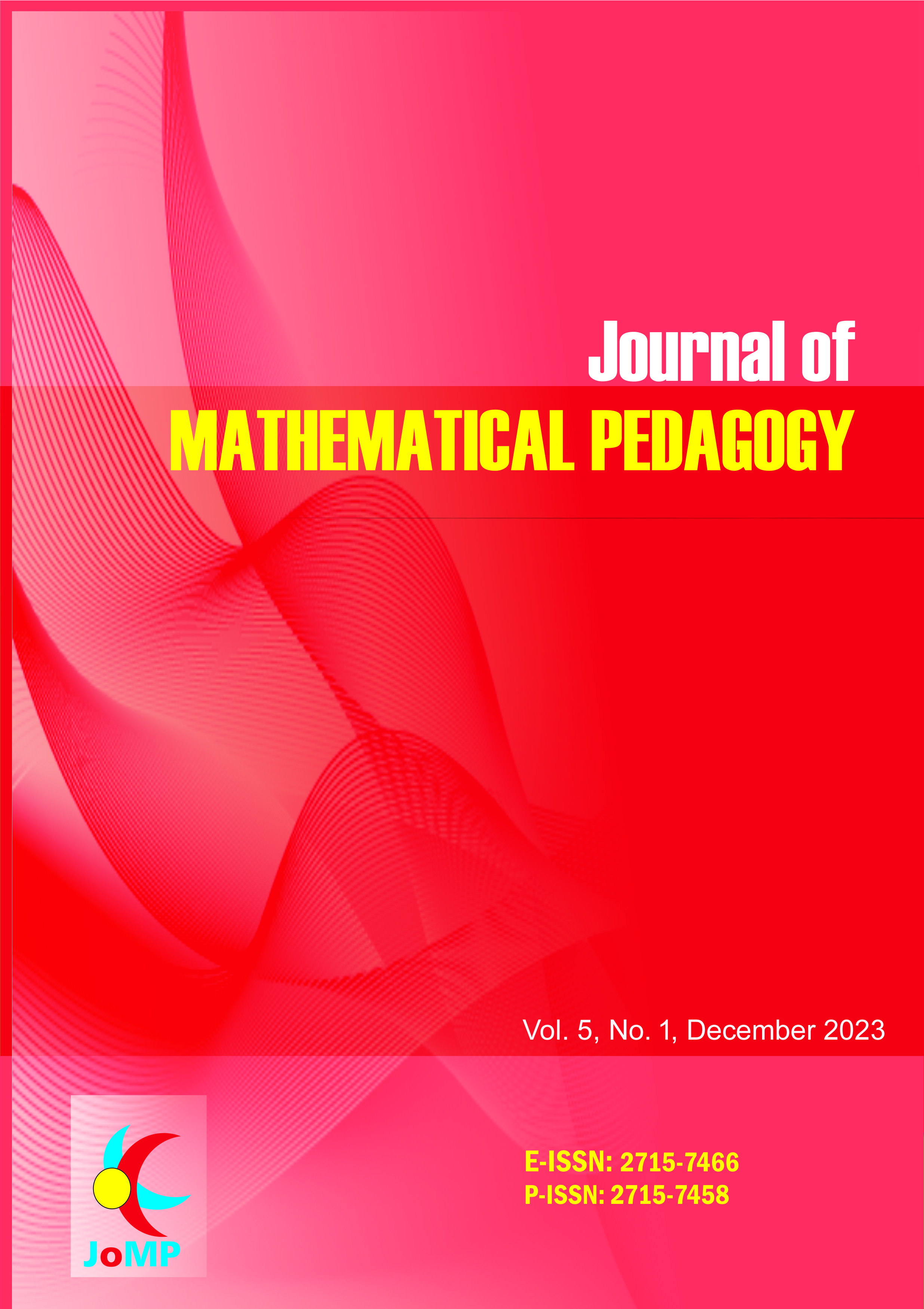Analysis of students' difficulties in writing skills in English mathematics courses
DOI:
https://doi.org/10.26740/jomp.v5n1.p42-46Keywords:
English, learning difficulties, studentsAbstract
This research aims to analyze the difficulties faced by students in developing their writing skills in the Mathematics English course. Through a qualitative approach, this research explores the factors that influence student difficulties, including language aspects and mathematical concepts.. The research subjects taken were 5th semester mathematics education students. The data collection methods used were documentation methods, test methods, and observation methods. The documentation method was used to obtain data about the list of names of students who were used as research subjects. The test method is used to obtain data on student completion of English courses, the observation method is used to determine objective conditions during English teaching and learning activities and to determine factors that can influence the learning process. The location of students' difficulties in learning English lies in abilities including writing ability and listening ability. The difficulty of spelling errors is 30%, vocabulary errors are 40%, listening errors are 10%, and language errors are 20%. This shows that the level of student ability has a role in the student learning process and can be one of the factors that influence the level of student academic achievement.
References
Allington, R. L. (1991). 17 Children Who Find Learning to Read Difficult: School Responses to Diversity. Literacy for a diverse society: Perspectives, practices and policies, 237.
Behari-Leak, K. (2017). New academics, new higher education contexts: A critical perspective on professional development. Teaching in Higher Education, 22(5), 485-500.
Daulay, N. (2016). Implementasi tes psikologi dalam bidang pendidikan. Jurnal Tarbiyah, 21(2).
Inganah, S., Darmayanti, R., & Rizki, N. (2023). Problems, solutions, and expectations: 6C integration of 21 st century education into learning mathematics. JEMS: Jurnal Edukasi Matematika Dan Sains, 11(1), 220-238.
Moleong, L., J. (2010). Metodologi Penelitian Kualitatif. Bandung: PT. Remaja Rosdakarya.
Qin, X. (2021). Evaluation of English intercultural communication ability based on machine learning and fuzzy mathematics. Journal of Intelligent & Fuzzy Systems, 40(4), 7259-7271.
Rahmawati, A. S. (2022). Students Difficulties in Solving Fraction Operations in Elementary School. In International Conference on Elementary Education. 4(1), 72-80.
Smith, J. (2020). Tantangan Menulis Bahasa Inggris untuk Mahasiswa Matematika di Perguruan Tinggi. Jurnal Internasional Pendidikan Matematika, 35(2), 123-136.
Supriyati. (2015). Metodelogi Penelitian. Bandung: Labkat Press.
Stilman, A. (2010). Grammatically correct: The essential guide to spelling, style, usage, grammar, and punctuation. London: Penguin.
Umar, H. (2013). Metode penelitian untuk skripsi dan tesis. Jakarta: Rajawali.
Zuriyah, N. (2007). Metodologi Penelitian Sosial dan Pendidikan. Jakarta: Bumi Aksara
 Abstract views: 319
,
Abstract views: 319
, PDF Downloads: 281
PDF Downloads: 281





